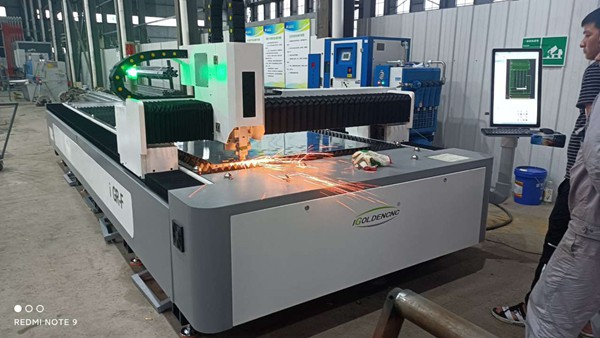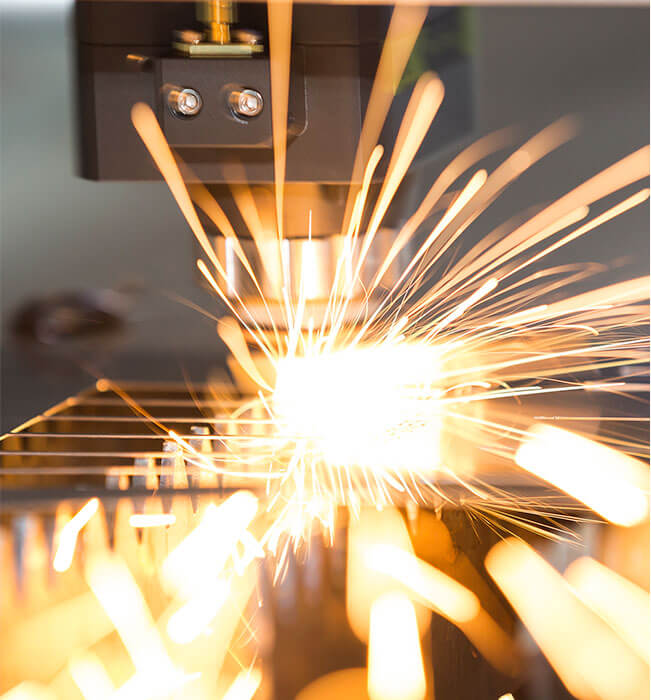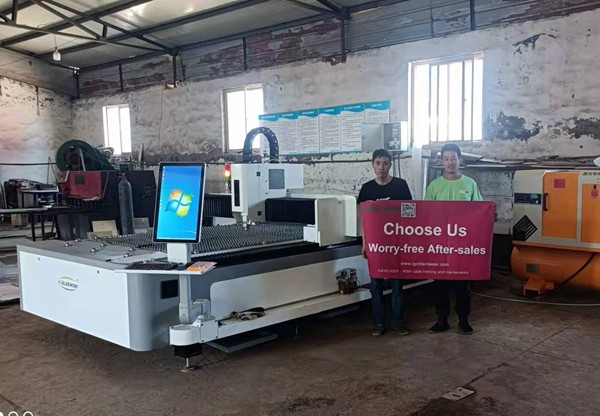Buyer Guide
How Does a Laser Cutting Machine Work ?
The fiber laser cutting machine for sale, also known as the metal laser cutting machine or metal laser cutter, is the laser machine adopting fiber laser source to cut steel, carbon steel, stainless steel, copper, brass, aluminum, iron, galvanized steel, titanium and various alloys. It has wide applications in metal part, equipment, ship, and automotive manufacturing, advertising signs, sheet metal structure, kitchenware, metal furniture, custom metal fabrication, and other fields.

How does the fiber laser cutting machine work?
A fiber laser cutting machine is a mechanical CNC cutting machine that uses a fiber laser beam to cut materials. Its high-energy-density laser beam comes from the fiber laser generator and transmits by fiber cables instead of optical lenses. The wavelength of the fiber laser cutting system is 1.06um, which can be absorbed by most metal materials. So a fiber laser cutter is mainly for cutting a wide range of metals, such as steel, aluminum, brass, titanium, nickel, etc.

A fiber laser cutter cuts the metal sheet by a high-density beam with the non-contacting method. The laser generator generates a fiber laser beam, which is focused into a light spot and irradiated to the surface of a workpiece. The area irradiated by the light spot of the workpiece will heat up sharply, and melt or vaporize instantaneously. Under the control of the computer numerical system, the light spot moves along a given path to form a slit. Meanwhile, the auxiliary gas blows off the cutting slag.
Therefore, a fiber laser cutter is high-tech equipment integrating laser technology, computer control technology, and precision equipment technology.
Components of a Laser Cutting Machine
Laser Source: The laser source generates a concentrated beam of light. Common types of lasers used in cutting machines include CO2 lasers and fiber lasers.
Laser Optics: The laser beam is directed and focused using a series of mirrors and lenses. The optics system concentrates the laser energy into a small, intense spot.
Controller: The controller is a computer system that interprets the design or pattern to be cut and converts it into digital instructions for the laser machine.
Worktable: The worktable provides a stable surface for the material being cut. It may be fixed or movable depending on the type of laser cutting machine.
Motion System: The motion system consists of motors and drive systems that move the laser head and the worktable in a controlled manner, following the programmed design.

Laser Cutting Machine Working Process
Design Input: The user creates a digital design or pattern using computer-aided design (CAD) software. This design specifies the shape and dimensions of the desired cut.
Digitalization: The design is converted into a digital format compatible with the laser cutting machine’s controller.
Material Setup: The material to be cut is placed on the worktable of the laser cutting machine. The material may be sheet metal, wood, acrylic, leather, or various other materials.
Calibration: The laser cutting machine is calibrated to ensure accurate positioning and focus of the laser beam. Laser Activation: The laser source is activated, and the laser beam is directed through the optical system to the material’s surface.
Cutting Process: The focused laser beam heats and vaporizes or melts the material along the programmed cutting path. The high energy density of the laser allows for precise and clean cuts.
Motion Control: The motion system moves the laser head and/or the worktable according to the programmed instructions, guiding the laser along the designated cutting path.
Cooling and Assist Gas: During the cutting process, a cooling system may be used to prevent overheating. Additionally, assist gases (such as nitrogen or oxygen) may be employed to improve the cutting efficiency and remove debris from the cut.
Completion: Once the cutting process is complete, the laser cutting machine stops, and the cut pieces are removed from the worktable. Laser cutting is widely used in various industries for its precision, speed, and versatility in cutting different materials. It’s commonly employed in metal fabrication, signage, aerospace, automotive, and other manufacturing applications.

IGOLDEN BLOG
Thank you for visiting the iGOLDENCNC website. iGOLDENCNC is the professional supplier of CNC machinery application solution, within the business of producing and selling CNC machinery and accessories.